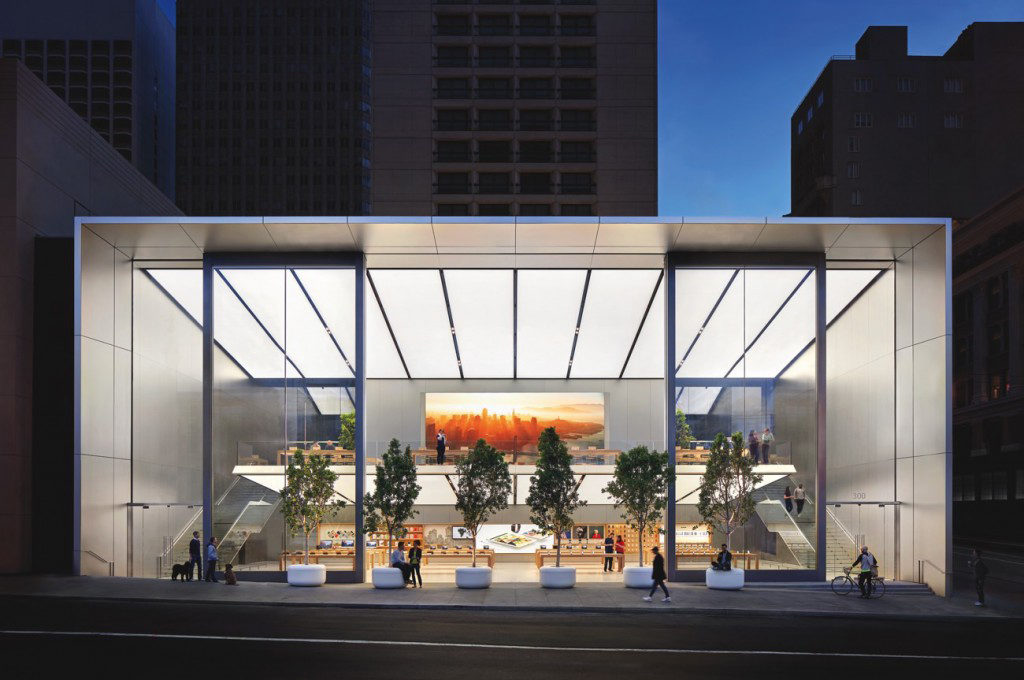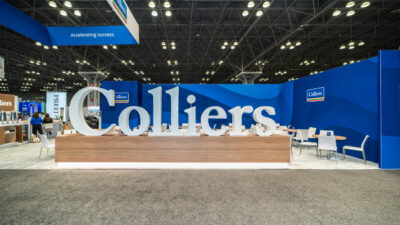Image courtesy of Apple
On May 21, Apple unveiled a new flagship store in San Francisco’s Union Square. Fifteen years to the day of opening their first retail locations, the company opened the doors to what they hope is the future of retail. The original—now ubiquitous—Apple stores, resplendent in modern, smooth surfaces put their products on display rather than line up inventory like a dressed-up warehouse. At a time when big-box retail and wholesale clubs ruled sales, Apple shook up the industry in the same way their phones and mp3 players defined modern electronics. With the Internet having completely changed the retail landscape since then, they’re hoping to develop new ways to engage with customers instead of forcing them to shop in ways that don’t make sense.
Plus: Four essentials for collaboration and innovation | Will technology replace commercial real estate brokerage?
LOOK—AND TOUCH
Internet retailers are flooding potential consumers with sales, tailored special offers, overnight shipping, and the ability to buy exactly what they want. The only thing they can’t offer is the ability to have a tactile experience with products. In many cases, it’s simply more convenient and more cost effective to buy online than it is to deal with the hassle of going to a store. Apple hopes to change that by designing an environment where people want to spend time. The new location is open and inviting with functioning products everywhere, even those produced by other manufacturers. Many people describe Apple products as pleasant to use thanks to their simplicity and elegance. The store mirrors that ethos, helping shoppers bond with products that have piqued their interest.
SPEND TIME—AND MONEY
Building on the idea of bringing in foot traffic, a public plaza has been incorporated. This open space with free Wi-Fi is open 24 hours a day as a place for people to spend time relaxing and working, much like a coffee shop. Simply having product—or even customer service—is no longer enough to draw customers away from other options. Apple plans to host live music, speakers and other seasonal events to make their stores enjoyable places to spend time in, not just to spend money.
COLLABORATE—AND CONSULT
Taking a page from the playbooks of businesses like Breather and RocketSpace, Apple included a new space for small businesses to collaborate and consult with experts. Called Boardroom, it acknowledges that many businesses are underutilizing their technology solutions. Instead of inviting salesmen to their own offices, Apple believes that entrepreneurs will prefer to avoid high-pressure sales pitches and learn the ins-and-outs of their products in an environment built for training. A newly created Apple Creative Pro staff position will provide special guidance for multimedia tools.
DUPLICATE, OR DIE?
Many retailers have attempted to emulate Apple’s layout. Some, such as Microsoft and Tesla, have spaces that are nearly identical, indicating how effective it is. Apple hopes to replicate its own success. Whether or not it will be another home run is anybody’s guess, but one’s thing’s for sure: Digital retailers are continually personalizing their service, and brick-and-mortar stores will need to find new ways to compete.
A mentor, a real estate executive and a mom, Karen spends time all over the map. If she isn’t traveling, Karen is busy with everything from IREM to Virginia Tech’s Real Estate program. When she has a few minutes to spare, she considers it a personal mission to find new homes for all of Lucky Dog Animal Rescue’s four-legged companions.

 Karen Whitt
Karen Whitt

 Nicole Larson
Nicole Larson

 Anjee Solanki
Anjee Solanki